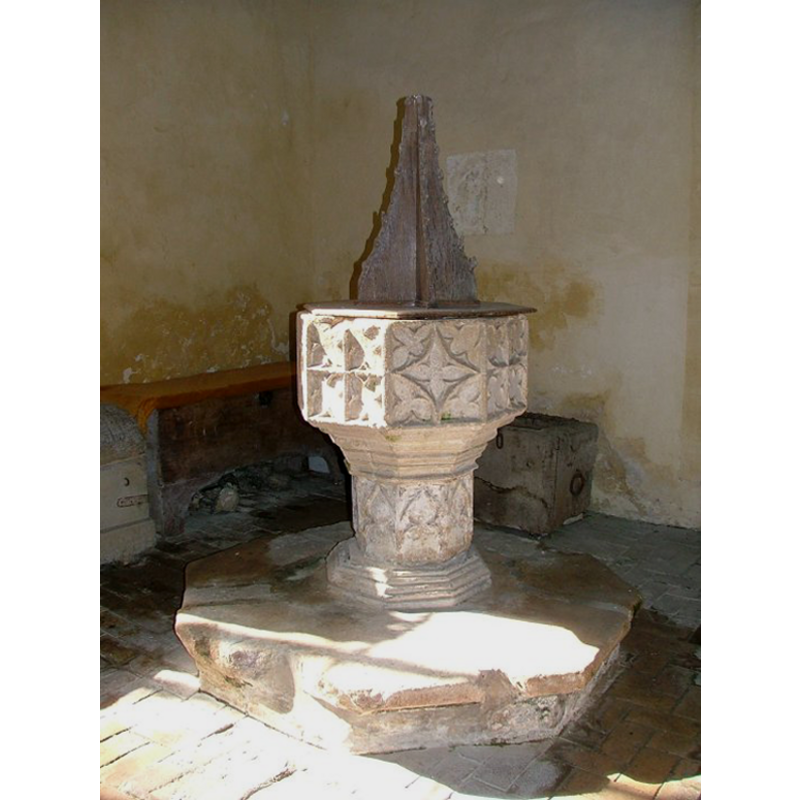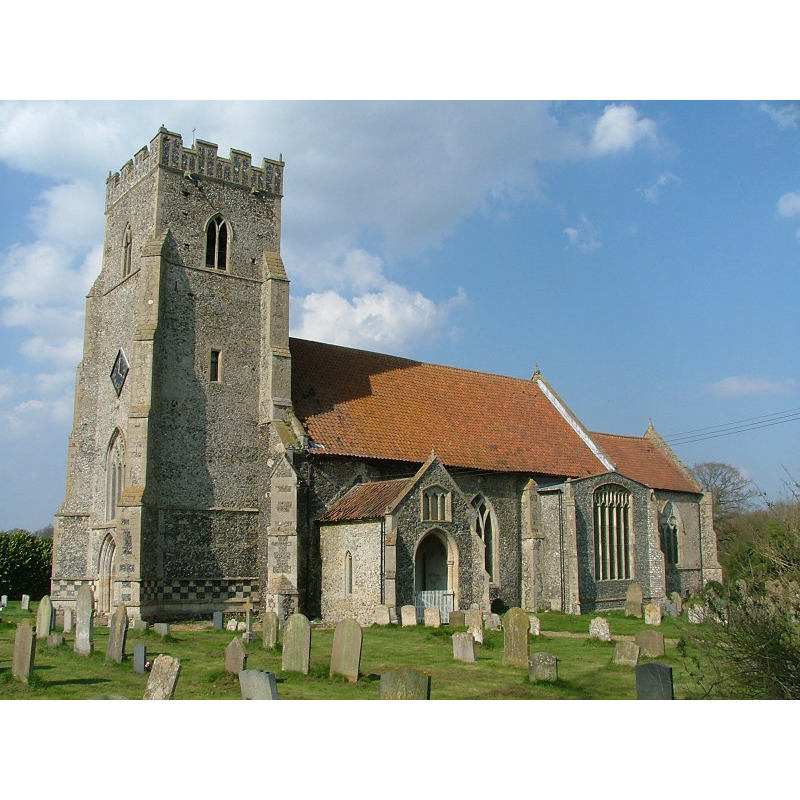Thompson / Thomeston / Thomestone / Tomestuna / Tumesteda

Image copyright © Simon Knott, 2004
Standing permission
Results: 7 records
design element - architectural - arch or window - Ogee - 8
design element - motifs - moulding - graded
design element - motifs - moulding - graded
design element - patterns - tracery - varied
view of church exterior - southwest view
view of church interior - nave - looking east
INFORMATION
FontID: 15212THO
Object Type: Baptismal Font1
Church/Chapel: Parish Church of St. Martin
Church Patron Saints: St. Martin of Tours
Church Location: Church Lane, Thompson, Norfolk IP24 1QD
Country Name: England
Location: Norfolk, East Anglia
Directions to Site: Located 5 km SSE of Watton
Ecclesiastic Region: Diocese of Norwich
Historical Region: Hundred of Wayland
Font Location in Church: Inside the church
Century and Period: 14th century, Decorated
Credit and Acknowledgements: We are grateful to Simon Knott, of www.norfolkchurches.co.uk, for the photographs of this church and font
Font Notes:
Click to view
Blomefield (1805-1810) writes: "This church is dedicated to St. Martin, and when Norwich Domesday was made, was valued at 20 marks [...] At this time there was a college of secular canons or chaplains, that eat together, and lived in a collegiate manner [...] The Church is leaded, the tower square, the chancel tiled; there is a south chapel and south porch, the vestry is down, the old stalls in which the master and fellows used to sit are still remaining with the arms of Shardelowe on them". Blomefield (ibid.) names "Brian de Saham" as its first recorded rector, in 1303, and cites four entries in Domesday for "Tomestuna" (fol. 80, 127, 277, 284), and one for "Tumesteda" (fol. 301). A font in this church is noted in Pevsner & Wilson (1999): "Font. Octagonal, with tracery motifs; probably Dec[orated]".- Font cover. Perp[endicular]; miniature size." Illustrated in Knott (2004). The font consists of an octagonal basin of vertical sides decorated with varied tracery patterns; the underbowl chamfer has graded mouldings; the octagonal stem has large ogee motifs on the sides; the octagonal lower base has graded mouldings. Raised on an octagonal plinth. The old wooden cover is very stark: a plain and flat octagonal platform of which are four raised ribs which, unlike in the later Jacobean designs, they are solid, with the only concession to ornamentation being the worn crockets on the spine; it may have had a finial originally; it does not have one now. [NB: we have no information on the font from the Domesday-period church here].
COORDINATES
Church Latitude & Longitude Decimal: 52.536465, 0.844562
Church Latitude & Longitude DMS: 52° 32′ 11.27″ N, 0° 50′ 40.42″ E
UTM: 31U 353812 5822891
MEDIUM AND MEASUREMENTS
Material: stone
Font Shape: octagonal (mounted)
Basin Interior Shape: round
Basin Exterior Shape: octagonal
LID INFORMATION
Date: 15th-century?
Material: wood, oak?
Apparatus: no
Notes: [cf. FontNotes]
REFERENCES
Blomefield, Francis, An essay towards a topographical history of Norfolk, 1805-1810
Knott, Simon, The Norfolk Churches Site, Simon Knott, 2004. [standing permission to reproduce images received from Simon (February 2005]. Accessed: 2009-08-31 00:00:00. URL: www.norfolkchurches.co.uk.
Pevsner, Nikolaus, Norfolk 2: North-West and South (2nd ed.), London: Penguin, 1999

